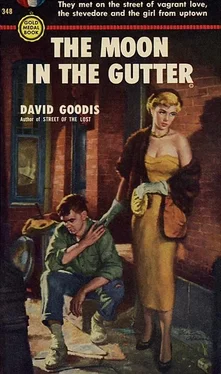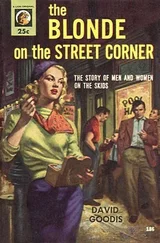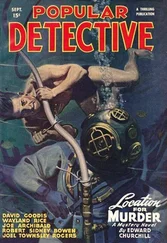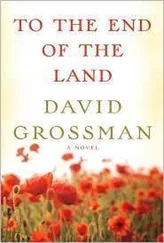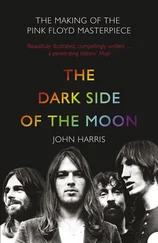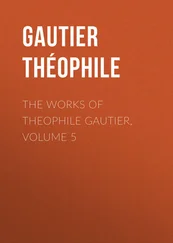For a long moment they stood there looking at each other. Then Mooney said, “You come here to investigate.”
“There’s nothing to investigate,” Kerrigan said. But while he said it, he was making a careful study of Mooney’s face, especially the eyes. He went on, trying to speak casually. “She did away with herself. There’s no question about that. She picked up a rusty blade and cut her throat and then she laid down to die. So the point is, she did it with her own hands. I’m not trying to take it past that.”
“It goes a long way past that,” Mooney said. “She did it because she was ruined and she couldn’t stand the pain or the grief or whatever it was. There’s never been any secret about that. You weren’t here when it happened, but there was a big commotion and the entire neighborhood was looking for the man who did it. You see, everybody liked her. I liked her very much.”
“You did?”
“Yes,” Mooney said. “Very much.”
“I didn’t know you were acquainted with her.”
“Don’t look at me like that,” Mooney said.
“What’s the matter?” Kerrigan said gently.
“I don’t like the way you’re looking at me.” Mooney’s face was expressionless. “Don’t jockey with me. I’m talking straight.”
“I hope so,” Kerrigan said. “How well were you acquainted? I never saw you talking to her.”
“We talked many times,” Mooney said. “Someone told her I used to paint pictures. She liked to talk about painting. She wanted to learn about it. One time I showed her some of my water colors.”
“Where? In your room?”
“Sure.”
Kerrigan looked at Mooney’s thick neck. He said, “She wouldn’t go into a man’s room.”
“She would if she trusted the man.”
“How do you know she trusted you?”
“She told me,” Mooney said.
“Can you prove it?”
“Prove what?”
“That you’re on the level.”
Mooney frowned slightly. “I’m sorry I started this,” he said to himself. Then, gazing directly at Kerrigan, “You’re suspicious of everybody, aren’t you?”
“Not exactly,” Kerrigan said. “I’m just doing a lot of thinking, that’s all.”
“Yes, I can see that.” Mooney was nodding slowly. “You’re doing a hell of a lot of thinking.”
Kerrigan took a slow deep breath. Then he said very quietly, “I’d like you and me to take a little walk.”
“Where?”
“To your room.”
“What for?” Mooney asked. “What’s in my room?”
“The water-color paintings,” Kerrigan said. He smiled dimly and added, “Or maybe there’s no paintings at all. Maybe there’s just a bed. I’d like to have a look and make sure.”
Mooney’s face was blank. “You’re checking on me?”
“Sure,” Kerrigan said, and he widened the smile.
For some moments Mooney didn’t move. Finally he shrugged and backed out of the alley and Kerrigan moved up beside him. They walked down Vernon Street toward Third. Near the corner of Third and Vernon they turned down another alley. It was very narrow and there were no lights in the windows of the wooden shacks. Mooney was walking slowly and Kerrigan followed him and watched him very carefully. Mooney’s shoulders were sort of hunched, his arms bent just a little and held away from his sides, and he seemed to be bracing himself for something.
“You there?” Mooney asked.
“Right behind you.”
Mooney slowed to a stop. He started to turn his head.
“Keep moving,” Kerrigan said.
“Listen, Bill—”
“No,” Kerrigan cut in. “You can’t stall now. You’re taking me to your room.”
“I only want to say—”
“You’ll say it later. Keep moving.”
Mooney walked on. Kerrigan followed him and they went halfway down the alley and arrived at a two-story shack that had no doorstep and no glass in the front windows. Mooney went up to the door and then he stopped again and started to move his head to get a look at Kerrigan.
“Inside,” Kerrigan said.
“Bill, you’ve known me all your life.”
“I wonder,” Kerrigan murmured. Then, through his teeth, “Go on, get inside. Get the hell inside.”
Mooney opened the door. They came into a room where a lot of people were sleeping. There weren’t enough beds and the floor was a jumble of sleeping grownups and children. Kerrigan stayed close behind Mooney, treading carefully to avoid stepping on the sleepers on the floor. They made their way across the room and went into another room where there were more sleepers. For an instant Kerrigan forgot about Mooney and he was wondering how many families lived in this dump. Goddamn them, he thought, they don’t hafta live like this. At least they can keep the place clean. But then his mind aimed again at Mooney as he saw the sign painter turning toward the stairway. And he thought, Be careful now, it might happen when we’re halfway up the stairs.
But nothing happened. Mooney didn’t even look back. They came up on the second floor and went down a very narrow hall. The ceiling was low and there wasn’t much air. It seemed there was hardly any air at all.
He followed Mooney into a room. It was a tiny room and there was no furniture. The only thing he saw was a mattress on the floor. But then Mooney switched on the light, and other objects came into view.
There was a large vase, almost four feet high. It was some kind of glazed stone and was cracked in many places and looked very old. Kerrigan looked to see what was in it and he saw it was filled with cigarette stubs and ashes. Next to the vase there was a stack of large rough-surfaced paper used for water-color paintings. And then he saw the jars of paint, the little tubes, and the brushes. Paint brushes of various sizes were scattered all over the room. He figured there must be at least a hundred brushes in here. He came closer to the stack of papers and lifted the edges and saw that some of the sheets hadn’t been used. But the others were all water-color landscapes and still lifes and a few portraits. And that was what he had come here to see. It was the tangible proof that Mooney hadn’t been lying.
“Well,” he said quietly, “you got the paintings here, all right.”
He waited for a reply. There was no reply. He turned slowly to look at Mooney, who stood facing the wall on the other side of the room. Then there was no sound in the room, not even the sound of breathing.
They were both looking at the wall and what was on the wall.
It was a rather large water color on thick board paper. It was the only painting on any of the walls. The dominant color was the yellow-gray background for the greenish-gray of her face and the cocoa-gray-yellow of her hair. It was just the head and neck and shoulders against the background. The head was slightly lowered and there wasn’t much expression on the face and it was merely the portrait of a very thin girl with long hair, not much to look at, really. But she was alive there on the wall. She seemed to be living and breathing and fully conscious of what she was and who she was. She was Catherine Kerrigan.
“I didn’t want you to see it,” Mooney said. “I tried to tell you.”
Kerrigan was moving backward. He kept moving backward until he bumped into the large vase. He reached back and gripped the edge of the vase. His fingers merged with the glazed stone and then his arms felt like stone and he wondered if his entire body were turning to stone. He was looking at his sister and telling himself she couldn’t be dead.
He heard Mooney saying, “Damn it, I tried to tell you. I didn’t want you to come here.”
“It’s all right,” he said. But the words meant nothing.
He looked at her up there on the wall and without sound said, Catherine, Catherine.
Читать дальше
